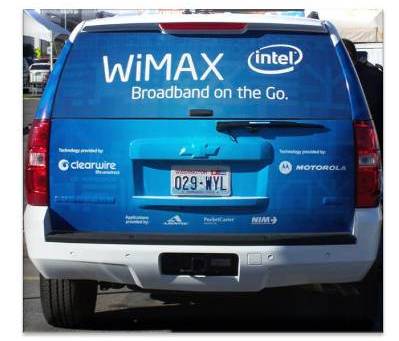
There’s been a lot of WiMAX chatter the last couple of months. For example, the major announcement in May of new financial backers for a US network (Comcast, Time Warner Cable, Google, Intel and Bright House). And yesterday came the much lower-profile, but still highly-important news of the first successful round of WiMAX certifications by the WiMAX Forum. Certification means interoperability, which is critical for any large-scale deployment.
Amid the flurry of recent WiMAX coverage, it’s been difficult to pin down the important facts for Joe Q. Public. After all, what normal person really is interested in spectrum frequencies? 700 MHz or 2.5 GHz – who cares as long as it means high-speed wireless Internet access?
Here are some of the important conclusions I’ve arrived at, several with the help of Paul Kapustka’s “Game On, WiMAX!” report. This is what consumers in the US should be interested in and what WiMAX has going for it.
What should matter to consumers:
- Per-use payment options – No requirement to pay a WiMAX monthly service fee if you’re only going to connect once or twice a month
- Handsets don’t have to be subsidized, meaning you’ll be able to buy anything WiMAX-certified at retail and automatically have Internet access
- The new Clearwire service will use mobile WiMAX instead of fixed WiMAX, which means you can literally stay connected while moving at high speed down a highway (Side note: Interestingly, I heard major pessimism around mobile WiMAX from one large industry analyst firm earlier this year. Premature reaction?)
- Nationwide network – before the new investors got on board, it wasn’t clear if WiMAX could scale beyond a few metro areas; now a nationwide build-out is assumed
- “[Some] observers see WiMAX silicon getting small and cheap enough to find its way into a wide range of consumer gear, such as digital cameras — which might also have their broadband connectivity built into the purchase price, like Amazon’s Kindle book reader.” -Sidecut Reports
What WiMAX has going for it:
- Comcast and Time Warner are now dependent on the Sprint/Clearwire deal to deliver wireless services, meaning they will do everything in their power to make the WiMAX network a success (Not only do the cablecos have to compete against telcos, but it looks like muni Wi-Fi deployments haven’t entirely disappeared either.)
- Gadget makers like the idea of being able to brand and sell their own devices directly to consumers without having to go through a wireless carrier
- Support costs should be minimal as WiMAX devices will be designed for self-install
- “The already-working nature of WiMAX technology makes the investment in the new Clearwire close to an even-money bet.” – Sidecut Reports
Since I’m entirely unwilling to pay for monthly 3G mobile broadband service, I am crossing my fingers that WiMAX rolls out quickly. It would certainly make trade shows, most of which are notorious for weak Wi-Fi connections, a lot easier to cover.
Disclosure: I work for Motorola, which is one of many companies that would benefit from the success of WiMAX.
What’s with the WiMAX SUV with Washington plates?
I live in Shoreline Washington.
It was a demo at CES. Don’t know how the Washington plates got to Vegas…
Clearwire is based in Washington State.
Until someone reveals the WiMax pricing strategy/plans, I’ll remain lukewarm on this for the short-term.
WiMax pricing, strategy/plans is a concern, but looking past that, the range of new devices and the technology is exciting! Hopefully the pricing will be affordable or come down in cost over time.
BHN Insider